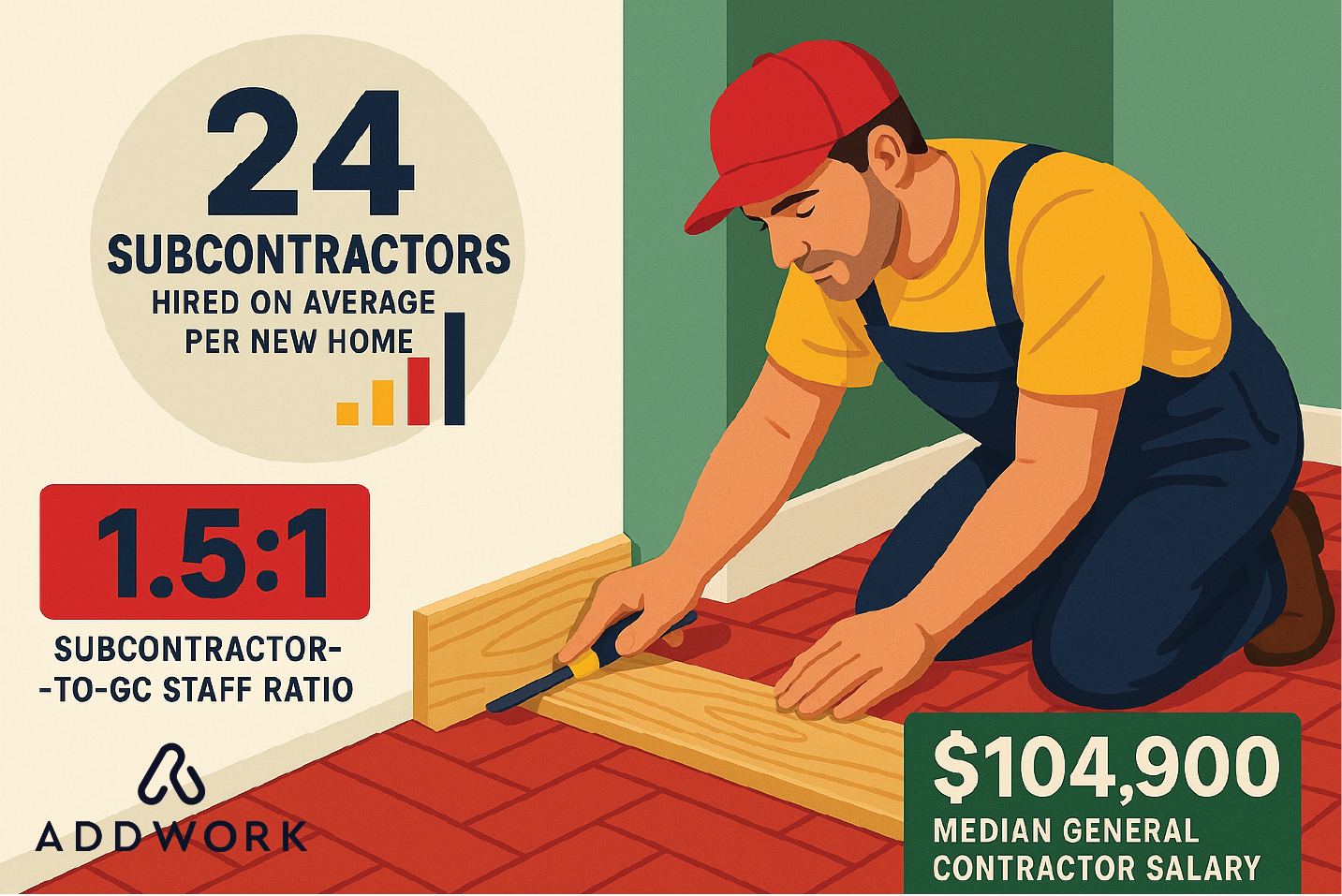
RECENT BLOG
SUBCONTRACTORS |
EACH UNIQUE
MANAGE APPROPRIATELY
Know Your Subs: Or How to Avoid Getting Blindsided by a Pot Filler
Picture this: I’m sitting in a meeting with my partner, our PMs, our office manager, and basically everyone who makes this construction ship sail. It's your standard contractor roundtable—coffee, notes, stories. And then, out of nowhere, my partner drops a little grenade:
"Hey, yeah, I talked to Daniel, the plumber, and he said you weren’t ready for him yesterday, so he went and installed a pot filler on another job instead."
Wait… what?
I immediately side-eye my PM, Grant, who manages that job. Because I know we had a five-hour meeting just two days ago, specifically to discuss plumbing specs, valves, heights, and all the glorious details that make a plumber’s heart sing. So I ask:
"Grant, how could we have missed something?"
And Grant, without missing a beat, replies:
"We didn’t. That’s bullshit."
Ah, yes. Classic construction industry they said, he said, she said circles.
After some back-and-forth, we finally get to the root of the issue: Daniel, our two-man-show plumber, got busy with a last-minute service call and never showed up at our job. Instead of, I don’t know, telling us, he got roped into an emergency pot filler install for a friend’s job. Because apparently, pot fillers are top priority in the plumbing world now. I guess? Meanwhile, I’m sitting here thinking my plumbing rough-in is in full blue skied carefree flight, only to find out it hasn’t even left the gate yet.
And that is how you waste a perfectly good meeting fuming over a pot filler.

The Take-Away
Generally, there are various methods to handle a situation like this:
Option One:
"We need a tighter internal schedule for our subs so we know exactly when they’ll be on our jobs."
Option Two (which I prefer):
"We need subs who can manage their own damn schedules and tell us if they can’t show up."
Logic behind option one is that we should consider micromanaging every sub’s schedule to make sure our jobs aren’t in conflict.
However, the logic behind my preferred method looks like this:
If I ask a plumber, “Hey, can you be at my job Tuesday?” and they say “Yes,” I expect that means they’ll be there Tuesday—not, “Sure, unless something better comes up.”
But that’s the problem. Not all subs operate the same way. Some are hyper-organized, some are winging it daily, and some are just… well, Daniel.
What I really needed to do was understand my subcontractors better. Who they are, how they work, how they handle scheduling, and whether or not they’ll bail on me for a glorified sink faucet installation.
Because here’s the thing: Not all subs are created equal.
Some are lean, mean, small-team machines like Daniel. Some are bloated corporate behemoths with ten trucks and an army of schedulers. And some are Dave, a guy who just sold his company’s building for $11 million and now has exactly zero interest in fixing your slightly misaligned door reveal.
So let’s talk about the different types of subs you’re likely to encounter and how to deal with them.
The Four Types of Subcontractors You’ll Work With
1. The "Daniel": The Two-Man Show (aka The Last-Minute Magician)
- Has a small team, usually just him and a partner.
- Balances service calls, remodels, and new construction.
- If an emergency pops up, your job is instantly less important.
- Will say "yes" to everything, even when he absolutely shouldn’t.
How to Work With a Daniel:
- Don’t expect full-day commitments. His jobs are like speed dating—in and out in an hour if he can do it.
- Confirm everything twice, three times if necessary.
- Expect occasional no-shows and have a backup plan ready.
2. The "Nick": The Corporate Giant (aka The Scheduling Bureaucracy)
- Runs 10+ trucks, multiple crews, and has an office full of people who don’t know who you are.
- Everything has to go through three layers of scheduling.
- Will absolutely not drop everything for you at 3 PM just because you forgot something.
How to Work With a Nick:
- Schedule way in advance.
- Expect zero flexibility.
- Use Nick for predictable jobs, not last-minute emergencies.
3. The "Dave": The "I Already Cashed Out" Guy (aka The Sub Who Couldn’t Care Less)
- Sold his business for millions but still "sticks around" for fun.
- Does good work—when he feels like it.
- If a problem comes up, he will ghost you, guaranteed.
- Backcharges don’t scare him. His retirement account is bigger than your annual revenue.
How to Work With a Dave:
- Beg. Bribe. Send him a fruit basket. Nothing else will work.
- Accept that if something goes wrong, you’re fixing it yourself.
4. The "James": The Newbie Scrapper (aka The "Oops, I Missed That" Guy)
- Just starting out, eager, and desperately needs money.
- Prices jobs way too low, realizes it mid-project, and panics.
- Will miss stuff on the plans because he’s trying to do too much, too fast.
- If you ask him to eat a mistake, he literally cannot afford to.
How to Work With a James:
- Always add a buffer to his price to cover inevitable mistakes.
- Double-check that he read the plans—he didn’t.
- Pay him on time, or he will cry.

Conclusion: Subs Are Like the UFC—Even the Very Best Have Strengths & Weaknesses
If you go into a project thinking all your subcontractors are cut from the same cloth, you’re setting yourself up for failure. You need a mix of big guys, small guys, reliable guys, and even the occasional wild card. But more importantly, you need to know what kind of sub you’re dealing with before they throw your schedule into chaos.
Take your subs out for a beer. Ask them about their business. Find out what makes them tick. Because the better you understand how they operate, the fewer "pot filler situations" you’ll have to deal with. And trust me, there are better things to stress about in construction than a rogue pot filler.
READY TO
GET STARTED?

